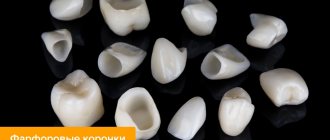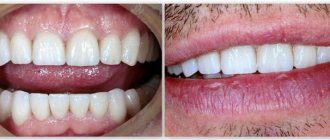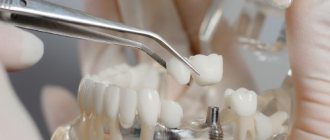– substances of natural or semi-synthetic origin that inhibit the growth of microorganisms or cause their death.
Antibiotics only affect microorganisms. Their effect does not apply to viruses or fungi. Therefore, it is advisable to use antibiotics for diseases caused by microbes. In case of viral diseases (hepatitis, influenza, etc.), their use makes no sense and can even cause harm due to side effects.
Depending on the chemical structure, antibiotics are divided into groups , for example, fluoroquinolones, penicillins, tetracyclines, macrolides, cephalosporins, etc.
Each group may contain antibiotics of different generations (for example, in the fluoroquinolone group, ciprofloxacin belongs to the first generation, levofloxacin to the second, and moxifloxacin to the third).
Basic principles of antibacterial therapy
There are certain requirements for prescribing antibiotics.
The antibiotic prescribed by the doctor must penetrate well into the tissues where there is a purulent-inflammatory process. For example, lincomycin penetrates well into bone tissue and is used for osteomyelitis, amoxiclav - into soft tissues, and can be used in the treatment of boils and erysipelas.
The antibiotic must have an inhibitory effect on the microorganism that caused the inflammation. For example, it makes no sense to use Tsifran for anaerobic infections (caused by anaerobic microorganisms), because Tsifran has no effect on them. In such a situation, Avelox is indicated - an antibiotic that acts incl. and anaerobic microorganisms.
To determine the sensitivity of the microorganism to antibiotics, a culture is taken from the wound. The difficulty is that the doctor usually receives the culture result in about 5–8 days, and an antibiotic must be prescribed immediately upon detection of microbial inflammation. In such a situation, empirical antibiotic therapy is used, the meaning of which is to prescribe an antibiotic that suppresses the most likely causative agent of the infection. For example, for a boil or carbuncle, antibiotics are prescribed that suppress Staphylococcus aureus, because It is this microorganism that most often causes suppuration in boils and carbuncles. Then, when the culture result comes, you can change the antibiotic to the one to which the microbe is sensitive in this particular case (if this is still necessary).
Antibiotics should be used to minimize the risk of side effects and complications in a given patient. For example, fluoroquinolones should not be prescribed to patients with epilepsy; aminoglycosides are not suitable for patients with hearing loss.
Don't repeat at home
An antibiotic is a powerful medicine and should always be prescribed by a doctor. For more than two decades, many pharmacies, in an effort to increase revenue, freely sold prescription drugs, except for narcotic and psychotropic drugs. This led to the fact that many doctors forgot how to fill out prescription forms, writing prescriptions on pieces of paper without even stamping them. And patients bought antibacterial, also known as antimicrobial, drugs for self-medication. Control has only tightened in the last two years.
“Even before I started working at the Fantasy Children’s Clinic,” says pediatrician Victoria Alipova, “a child was brought to the appointment who complained of abdominal pain and bowel movements. The medical history showed that the boy had been treated with antibiotics 12 times over the past year for every cold, including ARVI, when such medications are useless. For the first time, the doctor prescribed an antibiotic, and then the child’s mother acted by analogy. It was enough to stop the drug, and the problem with the intestines would normalize. Children can take antimicrobials in the form of syrups or suspensions even from birth, but only according to indications determined by the doctor. Many doctors prescribe such medications for any reason.”
Antibiotics have many side effects. First of all, they destroy the intestinal microflora: diarrhea, vomiting, possible colitis, liver and kidney dysfunction, and allergies. In such cases, probiotics or other drugs that normalize the functions of the gastrointestinal tract are often prescribed in parallel. However, urologist Rinaz Kamaletdinov says that the clinical recommendations do not indicate that such drugs can stabilize the intestinal microflora against the background of antibacterial therapy. And in each case of illness, only a specialist can make a decision on the type of therapy:
“Treatment with antibiotics should be carried out by a doctor,” Dr. Kamaletdinov is sure. - Even if similar symptoms reappear, you should not take the pills left over from your previous illness. You can consult a doctor online or by phone. In urology, different types of antibiotics are used, most often fluoroquinolones, especially levofloxacin. It is often necessary to change the pharmacological group, dose, duration and schedule of administration. For example, a patient with bacterial prostatitis caused by Escherichia coli was given one type of antibiotic. Treatment requires 28 days, but symptoms returned in the 3rd week. It turned out that a second infection appeared in the body, and E. coli developed resistance to the drug. I had to additionally prescribe a drug of a different spectrum.”
Routes of administration of antibiotics
- oral (by mouth), intramuscular and intravenous - should also be taken into account in outpatient practice. Thus, for patients receiving treatment at home, it is not advisable to prescribe antibiotics that require three intramuscular injections (for example, cefazolin), because such a patient will have to go to the treatment room three times a day.
Only a doctor should prescribe an antibiotic , because the use of antibiotics without indications or when there are contraindications can cause side effects and complications, and ultimately cause harm rather than benefit.
Is it possible to overcome resistance?
Over time, the bacteria adapt by producing genes that protect against the effects of antibiotics. If a person becomes infected with such bacteria, it is much more difficult to treat. This process is on a planetary scale, and doctors themselves are largely to blame for the problem. They often thoughtlessly use broad-spectrum antibiotics, which, like carpet bombing, destroy the microflora of the mucous membranes.
“It’s easier to prescribe an antibiotic to a child with a high fever or an unconscious intensive care patient and not worry about further treatment,” complains therapist and medical blogger Philip Kuzmenko. “The doctor simplifies his work by shooting sparrows out of a cannon and achieves the patient’s recovery, but at too high a cost.”
The next time the same disease overtakes a recovered person, the previous medicine may not work, since the bacteria have learned to resist it. In this arms race, microbes have a clear advantage. There will always be bacteria against which even the latest generation of drugs will be powerless.
“Self-medication with antibiotics is the murder of our grandchildren and great-grandchildren,” Dr. Kuzmenko is convinced. — Every day I receive letters that inexperienced or incompetent doctors prescribe antibiotics for ARVI. The mortality rate from influenza does not exceed 2−3%, and from a bacterial infection, for which there is no cure, it reaches 50%. Personally, in the first year of practice I prescribed antibiotics often, then less often, and in the 4th-5th year - almost never. There are 3 groups of so-called antibiotics of choice or first line: penicillins, macrolides and cephalosporins. These drugs are prescribed in case of a threatening situation even before confirmation of an accurate diagnosis. It is a myth that pneumonia can be “heard out” at an early stage, but in some cases the patient may not even make it to the pharmacy. Therefore, empirically, from a variety of antibiotics, “broad-spectrum” drugs were selected that act on 20–25 species of bacteria.”
Complete blood count and inflammation: when are antibiotics indicated?
A general blood test is undoubtedly the most popular of all existing tests. And for good reason, because its capabilities, among other things, make it possible to detect not only the presence and degree of inflammation, but also to determine its “origin” in relation to the pathogen. This means that the choice in favor of antibacterial or antiviral therapy can be made in the very first days of inflammation, which will not only speed up recovery, but will also significantly reduce the risk of serious complications.
Leukocyte squads
For the “uninitiated” people, a general blood test with a leukocyte formula (1.0.D2.202) most often looks like “Chinese”. To find a “sentence” about the nature of inflammation, which, at first glance, seems completely impossible. Whereas in fact, for a primary clarification of the nature of the infection, a “cursory” assessment of the number of various representatives of leukocytes is often sufficient.
1. Neutrophils
The “instant response group” in the fight against bacteria are neutrophils, the relative (%, in relation to other types of leukocytes) increase in which in a general blood test is a reliable marker of any bacterial inflammation and, accordingly, justification in favor of the antibacterial nature of treatment.
Whereas an absolute increase in the number of neutrophils (cells per liter of blood) often accompanies fairly severe forms of infections.
These representatives of leukocytes are the very first to migrate from the blood to the site of inflammation, where they literally “eat” and “digest” the enemy with the help of “poisonous” granules.
True, after such a “snack”, the neutrophils themselves become unviable and die. And the clinical reflection of this process is the formation of pus at the site of inflammation.
2. Lymphocytes
Simultaneously with the increase in neutrophils, in the blood of a “bacterial” patient there is a relative (%) decrease in the main virus fighters – lymphocytes, which is a reflection of the normal redistribution of “immune assets” for the current tasks of protection. And the process itself is called “relative lymphopenia”.
3. Monocytes
As “liquidators of the consequences” of inflammation, monocytes are “pulled” from the blood into the focus. Which are already “in place” transformed into larger ones - macrophages, and effectively cleanse the “space” of destroyed cells and bacteria.
The maximum increase in monocytes in a general blood test is usually observed only at the very end of inflammation, as a marker of the completion of the process and the beginning of the recovery period.
And, among other things, monocytes are universal “soldiers” and are involved in both bacterial and viral (especially herpetic origin), as well as autoimmune and some other mechanisms of inflammation. Therefore, their increase to one degree or another is characteristic of almost all types of inflammatory process.
results
- According to the data obtained, after one year the difference in the sum of the RMDQ scores between the amoxicillin group and the placebo group was −1.6 (95% CI −3.1-0.0, P = 0.04).
- Subgroup analysis also did not reveal clinically significant differences. For patients with Modic 1 changes, the difference was −2.3 (95% CI −4.2 to −0.4, P=0.02), for patients with Modic 1 changes −0.1 (95% CI −2.7-2.6, P=0.95).
- Fifty patients (56%) in the amoxicillin group had at least one adverse event, compared with 31 patients (34%) in the placebo group.
Rational use of antibiotics in rheumatology: selected aspects
Despite the extensive arsenal of antimicrobial agents developed and introduced into clinical practice over the past 60 years, issues of rational therapy of infectious pathology in various fields of medicine, including rheumatology, still require the closest attention, both scientifically and and in practical terms.
A-streptococcal tonsillitis/pharyngitis
Currently, a close association of acute rheumatic fever (ARF) with highly virulent (“rheumatogenic”) A-streptococcal strains, the components of which determine the immunizing effect and the development of an immune-mediated pathological process, has been proven. Current evidence suggests that humanity will not be free of group A β-hemolytic streptococcus (GABHS) for at least the next few decades. Thus, the possibility of ARF outbreaks remains possible in various regions of the world, especially among children aged 7–15 years.
In accordance with current recommendations, penicillin V (phenoxymethylpenicillin) or amoxicillin is considered as the treatment of choice for the treatment of GABHS infection of the pharynx in patients with good tolerance to these drugs (Table 1). The optimal drug from the group of oral penicillins is amoxicillin, which is similar in antistreptococcal activity to ampicillin and phenoxymethylpenicillin, but significantly superior to them in its pharmacokinetic characteristics, characterized by greater bioavailability (95, 40 and 50%, respectively) and a lower degree of binding to serum proteins (17, 22 and 60% respectively).
The administration of ampicillin in oral form for the treatment of GABHS tonsillitis, as well as respiratory tract infections of other localizations, is currently considered inappropriate by most authors due to the unsatisfactory pharmacokinetic characteristics of the drug (primarily low bioavailability).
The use of phenoxymethylpenicillin is justified only in younger patients, given the presence of the dosage form in the form of a suspension, as well as somewhat greater compliance, controlled by parents, which cannot be said about adolescents.
Indications for a single injection of benzathine penicillin are as follows:
- low performance of patients;
- A history of ARF and/or chronic rheumatic heart disease in close relatives;
- unfavorable social and living conditions (overcrowding factor);
- outbreaks of GABHS infection in organized groups;
- impossibility of oral administration.
In case of intolerance to β-lactam antibiotics, it is advisable to prescribe macrolides (spiramycin, azithromycin, roxithromycin, clarithromycin, midecamycin, josamycin), whose antistreptococcal activity is comparable to that of penicillin. These drugs also have the ability to create high tissue concentrations at the site of infection and are well tolerated. The use of erythromycin, the first representative of this class of antibiotics, has now significantly decreased, especially in therapeutic practice, since it most often, compared to other macrolides, causes undesirable effects on the gastrointestinal tract due to its stimulating effect on gastric and intestinal motility.
In modern reality, acquired resistance of GABHS to erythromycin is quite widespread, and in some European regions it exceeds 40%. According to the multicenter prospective study PEGAS-3, in Russia for the period 2006–2009. GABHS resistance to macrolides was as follows: erythromycin - 0.8%, clarithromycin - 3.3%, azithromycin - 10%, spiramycin - 1.4%, josamycin - 1.7%, midecamycin - 4.1% [2].
It is generally accepted that in the context of the widespread increasing resistance of GABHS to macrolides, these antibiotics should be considered only as alternative drugs for the treatment of GABHS tonsillitis and should be prescribed only to patients with an allergy to β-lactams. Failure to comply with this requirement, i.e., the widespread use of macrolides as initial empirical therapy for GABHS infection of the pharynx, can lead to very serious consequences, including the development of ARF [3].
The duration of treatment of GABHS infection of the pharynx with macrolides is 10 days, with azithromycin - 5 days. According to the latest data [4, 5], the regimen previously approved by the Pharmaceutical Committee of the Russian Federation (10 mg/kg/day in 1 dose for 3 days, course dose - 30 mg/kg) is significantly inferior in bacteriological effectiveness to the 5-day regimen ( 12 mg/kg/day in 1 dose for 5 days, course dose – 60 mg/kg), and comparison drugs.
Lincosamide antibiotics (lincomycin, clindamycin) also have high antistreptococcal activity, but they are prescribed for GABHS tonsillitis only in cases of intolerance to β-lactams and macrolides. Widespread use of these drugs for this nosological form is not recommended. It is known that with frequent use of oral penicillins, sensitivity to them from viridans streptococci localized in the oral cavity is significantly reduced. Therefore, in this category of patients, among whom there are a sufficient number of patients with rheumatic heart disease and valve prostheses, lincosamides are considered as first-line drugs for the prevention of infective endocarditis when performing various dental procedures.
In the presence of chronic recurrent GABHS tonsillitis, the probability of colonization of the site of infection by microorganisms producing specific enzymes - β-lactamases, which cause the hydrolysis of penicillin antibiotics, is quite high. In these cases, it is advisable to carry out a course of treatment with inhibitor-protected penicillins (amoxicillin/clavulanate) or second-generation oral cephalosporins (cefuroxime axetil), and in case of intolerance to β-lactam antibiotics, with lincosamides (Table 2). These antibiotics are also considered as second-line drugs for cases of unsuccessful penicillin therapy for acute GABHS tonsillitis (which is more common when using phenoxymethylpenicillin). There is no universal scheme that ensures 100% elimination of GABHS from the nasopharynx in global clinical practice.
It should be noted that the use of tetracyclines, sulfonamides, co-trimoxazole and chloramphenicol for GABHS infection of the pharynx is currently not justified due to the high frequency of resistance and, consequently, low rates of treatment effectiveness. The prescription of early fluoroquinolones (ciprofloxacin, pefloxacin, ofloxacin, lomefloxacin) is also not justified due to the low natural antistreptococcal activity of these drugs. Second-generation fluoroquinolones – the so-called “respiratory” ones (levofloxacin, moxifloxacin), despite their high antistreptococcal activity, are not indicated for the standard treatment of GABHS infections of the pharynx due to a wide spectrum of antimicrobial action (which may serve as an incentive for the development of resistance to these drugs from other infectious agents), a less favorable (compared to penicillin) profile of adverse drug reactions, as well as a higher cost.
Reactive arthritis
Reactive arthritis (ReA) is an inflammatory non-purulent disease of the joints that develops in close chronological connection (usually no later than 2 months) with a previous intestinal or urogenital infection. According to the conclusion of the international expert commission [6], Yersinia, Shigella, Salmonella and Campylobacter are recognized as certain triggers of postenterocolitic or enterogenous ReA (EReA), and Chlamydia trachomatis is recognized as urogenic ReA (UReA). Ureaplasma and gonococci are considered possible triggers for UREA. ReA belongs to the group of seronegative spondyloarthritis and, as a rule (about 80%), is associated with the presence of the HLA-B 27 antigen.
To date, most authors have considered it advisable to early prescribe antibiotics for acute ReA associated with chlamydial infection. It should be noted that sanitizing the body of a patient with UREA from chlamydial infection is a rather difficult task. It has been shown that with UREA in almost all patients, the inflammatory process in the urogenital tract is not limited to the urethra, but spreads to its overlying parts, which significantly complicates the sanitation of this focus. This circumstance, to a certain extent, may explain the fact that 7–10-day courses of antibiotic therapy used to treat uncomplicated urogenital chlamydia are completely ineffective for ReA associated with chlamydial infection. However, even with adequate long-term antimicrobial therapy, the rate of bacteriological failures in ReA can reach 40%, which is apparently due to the biological characteristics of the pathogen.
It is known that the carriers of the species characteristics of chlamydia - elementary bodies - are metabolically inactive, exist in the extracellular environment and in some cases can remain dormant for an indefinitely long time. Moreover, patients with ReA who have previously been treated with antibiotics may develop a persistent infection, when the initially metabolically active reticular bodies localized inside the cell stop at a certain stage of development and do not turn into elementary bodies. These intermediate forms are smaller in size than the usual ones and are not sensitive to the action of antibiotics.
For the treatment of urogenital chlamydia in ReA, antibiotics from the macrolide or tetracycline groups are recommended as the drugs of choice (Table 3), prescribed for 28–30 days. If these drugs are intolerant or ineffective, fluoroquinolones are used.
Control tests for chlamydia should be performed after 1, 2 and 3 months. after completion of treatment. Control of cure is preferably carried out by isolating chlamydia in cell culture. If it is impossible to conduct this study, it is recommended to use 2 methods for diagnosing chlamydial infection: immunofluorescent and polymerase chain reaction (PCR). The use of serological diagnostic methods is not recommended, since chlamydial antibodies are not found in all patients with current chlamydia, and IgG antibodies can remain in the blood for a long time after recovery from infection.
As evidenced by the experience accumulated at the Scientific Research Institute of the Russian Academy of Medical Sciences, the frequency of eradication of Chlamydia trachomatis in patients with ReA ranges from 65 to 76%, which is a very effective incentive for the constant search for new regimens and methods of treating this infection in these patients.
In general, recognizing the need for long-term use of antibiotics for ReA associated with chlamydial infection, it should be noted that there is no consensus on treatment regimens in the world literature. Large-scale multicenter clinical trials are needed to address this problem. The question of the effect of antibiotics on joint damage in UREA remains controversial and requires further study. However, treatment of chlamydia is necessary, because this infection is a sexually transmitted disease. Adequate treatment of the sexual partners of these individuals is also necessary. At the same time, it is generally accepted that the prescription of antibiotics for EREA is irrational, since by the time articular syndrome develops, the pathogen in most cases has already been eliminated from the macroorganism.
Lyme borreliosis (ixodid tick-borne borreliosis)
In recent years, rheumatologists have shown continued interest in Lyme borreliosis (LB), since this infection often causes damage to the musculoskeletal system. Clinical manifestations are caused by the presence of a living microbe in the tissues, so a sufficiently long-term antibacterial effect is necessary to relieve symptoms. BL pathogens are sensitive to a wide range of antibacterial drugs (tetracyclines, penicillins, cephalosporins of II–III generations, macrolides) and at the same time resistant to aminoglycosides, fluoroquinolones, sulfonamides. Due to ineffectiveness (or lack of evidence of effectiveness), first-generation cephalosporins, carbapenems, vancomycin, metronidazole, isoniazid, and rifampicin are not recommended for use at any stage of BL. Antibacterial drugs are prescribed both orally and parenterally in single and course doses, depending on the severity of clinical manifestations and the period of the disease. It has been proven that early (i.e., prescribed for tick-borne erythema migrans) antibacterial therapy reduces the risk of developing secondary erythema and joint damage and, thus, is an important factor in the further favorable course of BL. A high degree of correlation was revealed between treatment started in the first month of the disease and recovery. Thus, in BL, the prognosis clearly correlates not only with optimal antibacterial therapy, but also with the early timing of its initiation. In relation to rheumatology, this means that timely adequate treatment of local skin infection is, in fact, the primary prevention of the development of arthritis and other systemic complications. Table 4 presents antibacterial therapy regimens for BL developed by experts from the Infectious Diseases Society of America. It should be noted that antibiotic treatment is mandatory in all cases of BL, regardless of the duration and stage of the disease.
For Lyme arthritis without accompanying neurological symptoms, treatment begins with doxycycline. The advantages of this approach are oral administration, lower incidence of side effects and lower cost of the drug. With the simultaneous development of Lyme arthritis and neurological manifestations, ceftriaxone is recommended. Alternative antibiotics are cefotaxime or penicillin G. A repeat course is carried out no earlier than after 3 months, since the effect of antimicrobial therapy occurs slowly. For persistent or recurrent arthritis, a 4-week course of treatment with oral medications or ceftriaxone for 2–4 weeks is recommended. Repeated treatment with antimicrobial agents, started late, may be ineffective. If it is ineffective, non-steroidal anti-inflammatory drugs, intra-articular glucocorticoids are added, and arthroscopic synovectomy is performed.
For early treatment of pediatric patients, amoxicillin or cefuroxime axetil is recommended. For damage to the nervous system and chronic Lyme arthritis, ceftriaxone is optimal. As an alternative, cefotaxime can be used. Duration of treatment – 2–4 weeks.
During antibiotic treatment, approximately 5–10% of patients (usually using penicillin or cephalosporins) may develop a Jarisch-Herxheimer reaction. It occurs, as a rule, on the 1st day from the start of treatment in acute cases and on 2–3 days in chronic variants of the disease. The main manifestations of the reaction: chills, fever, headaches and muscle pain, increased local skin reactions in the area of foci of erythema (increase in its size, swelling and pain), leukocytosis, as well as deterioration in the general well-being of the patient. It is important to distinguish this reaction from an allergic reaction to an antibiotic. The Jarisch-Herxheimer reaction is not considered as a basis for discontinuing the antibiotic used, since it is not the result of intolerance to the drug by patients and usually resolves quickly either independently or as a result of increased detoxification therapy.
In case of BL, microbiological criteria for cure are not available for practice. For this reason, studies examining the relationship between in vitro susceptibility of a microorganism to a given antibiotic and clinical outcome have not been conducted. The treatment regimens used are advisory in nature, their effectiveness is based only on clinical experience. In practice, treatment results are assessed by the dynamics of clinical symptoms. The effectiveness of therapy at the early stage of BL is assessed after 6–12 months, since late manifestations of the disease can develop within a year after treatment of erythema migrans.
At the end of the course of antibacterial therapy, a number of patients continue to feel unwell, headaches, memory loss, impaired concentration, vague musculoskeletal pain, signs of chronic fatigue, autonomic dysfunction, etc. These symptoms, united by the term “post-Lyme” syndrome, persist from 6 up to 18 months and significantly reduce the quality of life of a patient with Lyme disease. It has been proven that prescribing antibacterial therapy to patients with post-Lyme syndrome does not lead to improvement.
Literature
- Nasonova V.A., Belov B.S., Strachunsky L.S., Sudilovskaya N.N., Kamanin E.I., Bogdanovich T.M., Krechikova O.I., Bogomilsky M.R., Ovchinnikov Yu .M. Antibacterial therapy of streptococcal tonsillitis (tonsillitis) and pharyngitis // Russian Rheumatology. 1999. No. 4. pp. 20–27.
- Azovskova O.V., Ivanchik N.V., Dekhnich A.V., Krechikova O.I., Kozlov R.S., PeGAS research group. Dynamics of antibiotic resistance of respiratory strains of Streptococcus pyogenes in Russia for the period 1999–2009. // Clinical microbiology and antimicrobial chemotherapy. 2012. No. 14 (4). pp. 309–321.
- Logan LK, McAuley JB, Shulman ST Macrolide treatment failure in streptococcal pharyngitis resulting in acute rheumatic fever // Pediatrics. 2012. Vol. 129(3). R. 798–802.
- Casey JR, Pichichero ME Higher dosages of azithromycin are more effective in treatment of group A streptococcal tonsillopharyngitis // Clin Infect Dis. 2005. Vol. 40 (12). R. 1748–1755.
- Altamimi S., Khalil A., Khalaiwi KA et al. Short versus standard duration antibiotic therapy for acute streptococcal pharyngitis in children // Cochrane Database Syst Rev. 2009. (1). CD004872.
- Braun J., Kingsley G., van der Heijde D., Sieper J. On the difficulties of establishing a consensus on the definition of and diagnostic investigations for reactive arthritis. Results and discussion of a questionnaire prepared for the 4th International Workshop on Reactive Arthritis, Berlin, Germany, July 3-6, 1999 // J Rheumatol. 2000; Vol. 27 (9). R. 2185–2192.
- Nasonov E.L., Ananyeva L.P., Belov B.S., Shubin S.V., Tarasova G.M., Polyanskaya M.V., Kogan K.M., Zolotareva G.D., Leontyeva O .IN. Rational use of antibiotics in rheumatology // Methodological recommendations No. 8. M., 2008. 24 p.
- Wormser GP, Dattwyler RJ, Shapiro ED, Halperin JJ, Steere AC, Klempner MS, Krause PJ, Bakken JS, Strle F., Stanek G., Bockenstedt L., Fish D., Dumler JS, Nadelman RB The clinical assessment, treatment , and prevention of lyme disease, human granulocytic anaplasmosis, and babesiosis: clinical practice guidelines by the Infectious Diseases Society of America // Clin Infect Dis. 2006 Nov 1. Vol. 43(9). R. 1089–1134.










